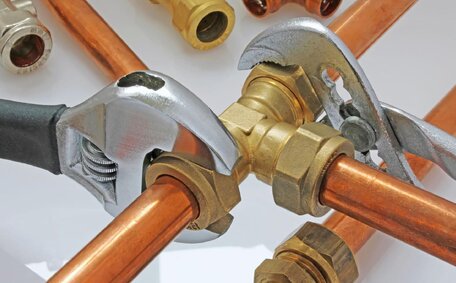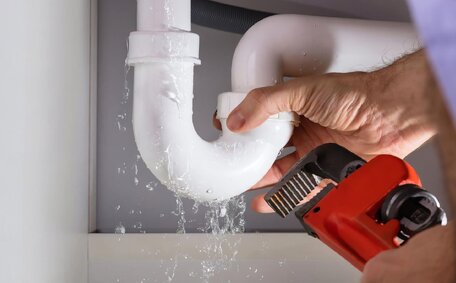Introduction to Pipe Relining
Pipe relining is a trenchless method of restoring damaged pipes without the need for major excavation or replacement. The process involves installing a flexible epoxy resin lining inside the existing pipe to effectively create a 'pipe within a pipe’. This allows for pipes to be repaired without disturbing landscapes or structures above ground.
Pipe relining has been used across Europe for over 25 years and is an economical, long-lasting solution compared to traditional pipe replacement methods. By avoiding extensive digging, it also minimises disruption and is environmentally friendly. The curing resin bonds securely to the old pipe walls, restoring structural stability and sealing leaks and cracks.
While very small pipes may not be suitable for relining, the process can accommodate a wide range of pipe sizes. Any misconceptions about capacity reduction are largely unfounded, with skilled providers able to deliver the required flow rates. Relined pipes often end up with smoother internal walls, improving hydraulic capacity.
What is Considered the Minimum Pipe Diameter for Relining?
When it comes to pipe relining, the minimum viable pipe diameter is generally considered to be around 40mm (1 1⁄2 inches). With skilled providers employing the latest epoxy resin products and application techniques, pipes ranging from 40mm up to 225mm (9 inches) can typically be relined successfully.
While the resin lining does result in a slight reduction of the inner diameter, well-executed relining work ensures this does not impact flow capacity or restrict usage.
Building codes permit diameter reductions up to 12.5% while maintaining required flow rates. For a 100mm pipe, the final internal diameter would be around 87mm - still sufficient for its intended purpose.
An expert technician can assess all your pipes during inspection and determine if a relined smaller diameter can handle the plumbing demands of your property. They will consider flow rate requirements along with the number and types of fixtures served.
In summary, pipe diameters between 40-225mm can usually be relined while preserving full functionality. And avoiding major pipe replacement ultimately outweighs a marginal loss of internal area.
Measuring Existing Pipe Diameters
Accurately measuring pipes is an important first step when assessing their suitability for relining. It helps determine if the existing diameter falls within the relinable range of 40mm to 225mm.
Pipe sizes can be described in two ways - the nominal diameter and actual diameter. The nominal diameter refers to the number designation for that pipe size e.g. However, the actual inside diameter is usually smaller due to manufacturing tolerances and the thickness of the pipe walls.
100mm.
To measure pipe diameters, plumbing cameras are used to get a clear internal view. Before inspection, ensure access points like cleanouts are located and pipes are cleared of debris. Sections need to be drained and vented so cameras can pass through.
The camera feeds high-resolution footage to the technician who will take measurements at various points along the pipe’s length using on-screen tools. Readings account for ovality by capturing both horizontal and vertical dimensions. Photos and videos are also recorded.
measuring diameter, camera inspections identify any damage needing repair and help determine the best relining method. This visual data informs the feasibility and planning stages of your relining project.
When is a Pipe Too Small to be Relined?
Determining if a pipe is too small for relining depends on more than just its diameter. While pipes under 40mm are typically too small, a range of factors influence whether severely deteriorated pipes above this size can be practically relined.
Aside from diameter, the pipe’s overall condition, shape, material and purpose need consideration. For instance, collapsed sections that are extensively oval rather than round may not have enough residual circular space for lining. Pipes that are structurally unsound may need replacing completely.
Very thin pipe walls affected by major corrosion can limit the thickness of liner possible, impacting durability and performance. And pipes serving demanding water flow requirements with multiple connections may struggle with slight diameter reductions.
In summary, if a pipe is less than 40mm diameter or displays extreme deterioration and distortion it may be borderline for relining capacity. Your plumbing professional can best assess viability using pipe inspection cameras. While lining small pipes has good technical success, all your severely degraded ones sometimes need more substantial intervention.
Factors Impacting the Minimum Diameter for Relining
When assessing if a damaged pipe meets the minimum diameter for relining, the prime consideration is its current internal width. Technicians measure the narrowest section to see if there is at least 40mm of circular space inside after accounting for severity of corrosion and deformation from cracks or collapses.
However, viable pipe access also impacts the feasible minimum diameter. Openings need to accommodate relining equipment and materials being inserted. For example, a 50mm pipe with a tight 45 degree bend may preclude lining while a 40mm straight pipe with wide access could be relined.
The existing pipe’s material affects the adhesion and curing process of the epoxy resin. PVC and concrete pipes usually provide suitable surfaces, while smooth pipes like copper can be pre-treated so linings bond effectively for longer life.
Bends and junctions normally do not limit the pipe diameters suitable for relining. Specialised resignation-impregnated linings have flexibility to navigate turns. Bladder devices can navigate multiple branches, allowing linings to form seamlessly within.
An expert assessment of pipe diameter as well as the condition, material and access layout helps determine if relining is technically viable. Meeting an approximate 40mm minimum width alone does not guarantee suitability. But where access and adhesion are feasible, diameters around this size can often be lined successfully.
Addressing Common Concerns about Minimum Diameters
When it comes to relining pipes, some common concerns revolve around how the slight diameter reduction may impact functionality. However, rest assured that expert plumbers consider necessary flow rates and use superior resin products to prevent problems.
A relined 100mm pipe would typically have an internal diameter of around 94mm - only a 6mm reduction. Building codes allow this while maintaining required water volumes. The new jointless pipe and smooth internal walls also improve flow.
Without joints that roots can invade, a relined pipe prevents blockages far better than traditional pipe repairs. And the durable resin holds up well against factors causing deterioration.
Another worry is that smaller pipes mean lower water pressure. But trials assess pressure differentials before and after relining to validate optimal performance. Water saving tapware and appliances further help compensate for marginal diameter decreases.
By using advanced inspection cameras, plumbers identify the best relining approach for your pipes if diameters are borderline. Options like high-strength resin, protective layering, and stormwater flow calculations provide viability while retaining capacity.
In summary, slight diameter reductions through relining will not hinder functionality or durability. Root intrusion, leaks and pressure issues are actually mitigated thanks to the pipe’s restored integrity. Your qualified technician can verify flow capacities meet building codes and usage needs.
The Benefits of Relining Small Diameter Pipes
Relining pipes with smaller diameters under 225mm offers numerous advantages over replacement or leaving them unaddressed. While meeting capacity demands, relining enhances durability, sustainability and is cost-effective.
The seamless epoxy lining creates a jointless pipe within the existing one. Without invasive joint repairs that often fail again from root ingress or shifting soil, relined pipes provide long-term resilience.
A key benefit is avoiding the expense and disruption of digging trenches through landscapes and floors to access piping. Localised access points used in relining also minimise environmental impact and site restoration work.
In terms of costs, pipe relining averages around 30-50% less than full replacement. Shorter projects mean lower labour fees too. And preventing future failures reduces maintenance expenditures.
Relining also allows for incremental repairs rather than entire re-plumbing. Only sections showing damage get addressed, saving money and resources. This selectivity provides flexibility as pipe issues emerge over time.
Larger diameter pipes rely more on the structural strength of their walls. But smaller pipes gaining structural reinforcement from lining makes their renewed life expectancy particularly noteworthy. Sealing cracks rather than disturbing soil stabilised around tiny pipes prevents destabilisation.
So while pipes under 40mm remain difficult to reline, those up to 225mm gain substantially from this non-invasive solutions. Homeowners and businesses should consider relining wherever diameters permit - restoring function at a fraction of replacement costs while upholding environmental values.
Evaluating if Relining is Right for You
When weighing up whether to reline your pipes, the key considerations include all your current pipe diameters and material condition, expected water demands, flow rate requirements, and accessibility for equipment. If diameters are under 40mm or over 225mm, relining may not be feasible. Likewise, extreme corrosion or deformation could preclude internal lining.
An on-site inspection by a professional plumber is the best way to determine if your pipes are suitable candidates for relining. At St Ives Plumbing, our technicians use specialised cameras to visually assess the diameter and state of your pipes. We also factor in your property’s water usage needs and test pressures.
From this detailed pipe analysis, we can advise you on the practicality of relining. We’ll explain the process, costs and projected longevity compared to replacement. With over 25 years’ plumbing experience, we ensure any diameter reduction doesn’t impact all your flow rates or water volume demands.
For a free on-site assessment of your pipes’ suitability for relining, contact our team at St Ives Plumbing on 1300 349 338 or email [email protected]. We also welcome any general queries about this innovative piping solution.






